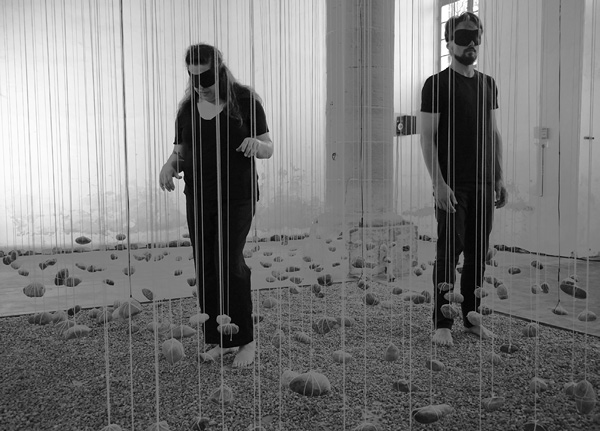
WITHOUT
first performed on August 26, 2016
Royal Residence of Haus Baden, Schloss Salem, Salem, Germany
performed once in 2016
CARPWOZ / LAUREL JAY CARPENTER, PHILIPPE WOZNIAK
Newcastle, UK / Berlin, Germany
591575947l591575947a591575947u591575947r591575947e591575947l591575947@591575947l591575947a591575947u591575947r591575947e591575947l591575947j591575947a591575947y591575947.591575947c591575947o591575947m591575947 591575947/591575947 591575947w591575947o591575947z591575947n591575947i591575947a591575947k591575947.591575947p591575947h591575947i591575947l591575947i591575947p591575947p591575947e591575947@591575947g591575947m591575947a591575947i591575947l591575947.591575947c591575947o591575947m
www.laureljay.com
WITHOUT
CARPWOZ / LAUREL JAY CARPENTER, PHILIPPE WOZNIAK
A visual and sound installation with durational performance.
Working together for the first time after meeting at previous artist residencies (in Germany 2014 and USA 2015) Carpenter and Wozniak bring their discrete expertise in visual and sound composition to create a hybrid form where installation, sound and sculptural performance share equally in the inspiration, creation and presentation of a new work of art.
Initially inspired by the site of Schloss Salem, the pair rigorously researched the devotional practices of the former Cistercian monks of the abbey, using scholarly and experiential techniques. Bernard of Claivaux was an early influence in the order by citing “the narrowest gate and steepest path” as the surest and purest way to enlightenment. The visual, sound and performance elements of “Without” each employ an aesthetic of austerity and self-denial shared by the Cistercians.
The Salem site is surrounded by special stones, collected and catalogued at the castle as a record of glacial movement. Connected to this landscape, the sound was collected from the movement of stones rubbing against other stones and the body, just as the visual installation was constructed of a low plane of suspended stones. The performers moved through the space—trudging against the resistance of string and stones—extracting a deep sadness in their endless blind search for the special rose quartz gem mixed in with the gravel. This movement physically created the interactive soundscape by the subtle sway of the stones triggering the sound samples. In effect, the whole installation became a musical instrument activated by the performers.
Can we prove our devotion without longing?